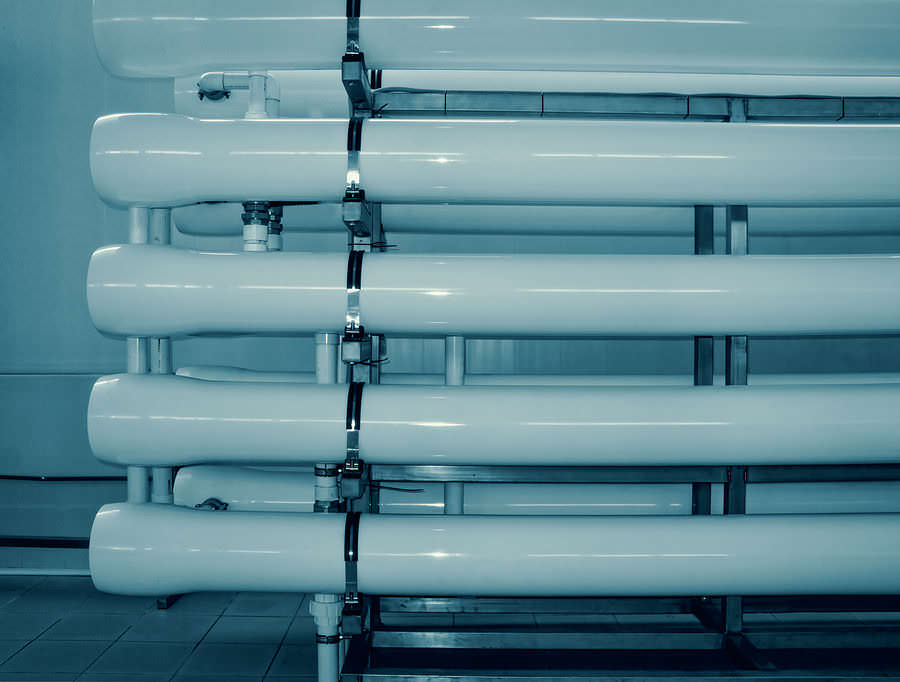Reverse osmosis is a popular technology used in water filtration systems across the U.S. Based on a natural process called osmosis, this technology provides a number of important benefits, including better tasting water, relatively simple maintenance procedures and removal of a wide variety of harmful contaminants that may be lurking in your unfiltered residential or commercial water supply. Let’s take a closer look at osmosis, reverse osmosis and the specific substances that a reverse osmosis system will filter from your water.
Osmosis Essentials
Osmosis is the name for a process that occurs whenever water with a low salt content comes into contact with water that has a higher salt content. In these circumstances, the low-salt water will naturally flow toward the high-salt water. This simple process is responsible for some of nature’s most important activities, both inside and outside the human body. Prominent examples of these activities include your kidneys’ ability to pull excess water from your bloodstream and plants’ ability to pull life-giving water from the surrounding soil.
Reverse Osmosis Essentials
As its name indicates, reverse osmosis turns the process of osmosis around. Instead of relying on the natural tendency of low-salt water to flow toward high-salt water, it forces high-salt water to flow toward low-salt water. In order to make reverse osmosis work, you need two things: pressure and a semi-permeable membrane similar to a very fine window screen, which filters out particles above a certain size. Under sufficient pressure, a reverse osmosis system forces water with a high salt concentration through a semipermeable filter or membrane, which stops salt and other unwanted particles from passing into your commercial or residential drinking taps.
In real life, a reverse osmosis system is a bit more complicated than this. Essential parts of a typical setup include one or more prefilters that stop certain substances from reaching the main filter, a post filter that helps ensure the final quality of the water coming from the system, and a storage tank that provides an on-demand supply of filtered water. Contaminants that don’t make it through the filters pass directly into your drain for simple disposal.
What Can a Reverse Osmosis System Filter from Your Water?
The main membrane of a reverse osmosis system has incredibly small openings that screen out everything larger than 0.0001 microns in size. This means that the system can filter out a wide assortment of substances and microorganisms that can degrade the taste of your water and/or endanger your health. In addition to salt (sodium), the list of chemical contaminants removed by reverse osmosis includes:
- Lead
- Copper
- Chloride, and
- Chromium
The process will also help make sure that you’re not exposed to unsafe levels of a broad range of other common contaminants, including:
- Arsenic
- Nitrate
- Radium
- Nickel
- Mercury
- Selenium
- Potassium
- Sulfate, and
- Phosphorus
The federal Centers for Disease Control and Prevention rate reverse osmosis as “very highly effective” at removing three types of microorganisms from your water supply: viruses, bacteria and protozoa. Harmful virus species removed by the process include:
- Norovirus
- Enterovirus
- Hepatitis A, and
- Rotavirus
Harmful bacteria species removed by reverse osmosis include:
- E. coli
- Salmonella
- Campylobacter, and
- Shigella
Harmful protozoa species removed by the process include:
- Giardia, and
- Cryptosporidium
As you can see, installation of a high-quality reverse osmosis system can greatly improve the safety of your drinking water. In addition, the improvement in taste will help make any reliance on bottled water a thing of the past. When you factor in the low demands for proper maintenance, it’s easy to see why so many homeowners and business owners turn to reverse osmosis as a preferred option for their critically important water supply.
Biard & Crocket provides expert plumbing services and water filtration system installation in Orange County, CA.

